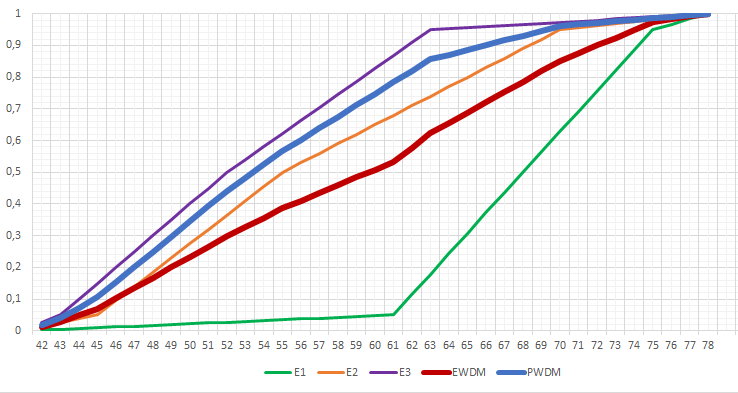3.4.5 Compute the solution of the DM
Course subject(s)
Module 3. Performance-based weights and the Decision Maker
Back to the Dutch eating habits example. Recall that, in the example, a Dutch supermarket was interested in the eating habits among Dutch adults.
Suppose the purpose of using structured expert judgment are the prediction of future eating habits among Dutch adults, say in 2025. And suppose that the interest is in the following questions of interest
6) What percentage of Dutch adults will eat fruit on a daily basis by 2025?
7) How many liters of milk will be consumed on a yearly basis by the average Dutch adult in 2025?
Note that, as beforehand, the data are purely fictional.
| Question | Realization | Expert 1
5% 50% 95% |
Expert 2
5% 50% 95% |
Expert 3
5% 50% 95% |
|---|---|---|---|---|
| 6 | 61 68 75 | 45 55 70 | 43 52 63 | |
| 7 | 67 71 80 | 50 61 68 | 55 65 73 |
Recall also the plots of the cdf’s for all three experts, along with the performance-based Decision Maker (PWDM) and the equal weight Decision Maker (EWDM).
For Question 6


Decision Making Under Uncertainty: Introduction to Structured Expert Judgment by TU Delft OpenCourseWare is licensed under a Creative Commons Attribution-NonCommercial-ShareAlike 4.0 International License.
Based on a work at https://online-learning.tudelft.nl/courses/decision-making-under-uncertainty-introduction-to-structured-expert-judgment//.



